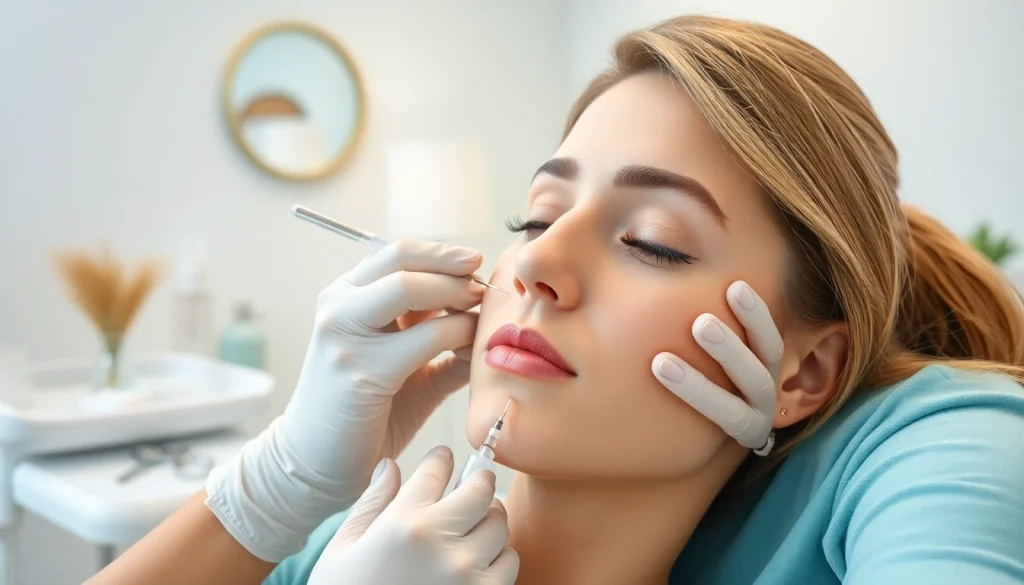1. Understanding Botox MS: What It Is and How It Works
Botox MS, a unique formulation of the well-known Botox treatment, has garnered significant attention in the world of cosmetic dermatology. Not only does it provide aesthetic benefits, but its applications extend into therapeutic realms as well. It is crucial for potential candidates to comprehend what botox ms entails, how it functions and the impact it can make on skin rejuvenation.
a. The Science Behind Botox MS
Botulinum toxin, the active ingredient in Botox MS, works by temporarily blocking nerve signals in the muscles where it is injected. This reduces muscle activity, which diminishes the appearance of wrinkles and lines caused by facial expressions. The precise formulation of Botox MS offers targeted treatment, allowing for finer control over the areas treated, resulting in a natural-looking outcome.
b. Common Uses and Benefits
Botox MS is primarily used for cosmetic purposes, notably to smooth out frown lines, crow’s feet, and forehead lines. However, it has therapeutic uses such as migraine treatment, reduction of excessive sweating (hyperhidrosis), and alleviation of muscle spasms. The benefits include a more youthful appearance, increased self-confidence, and in some cases, relief from chronic discomforts.
c. Debunking Myths About Botox Treatments
Several misconceptions surround Botox treatments. One prevalent myth is that Botox results in a “frozen” appearance. However, when administered correctly, the treatment allows for natural facial expressions while softening the appearance of wrinkles. Additionally, many believe that Botox is only for older individuals, but it has become increasingly popular among younger adults seeking preventive treatments.
2. The Botox MS Experience: What to Expect
The experience of receiving Botox MS can vary based on individual circumstances, but there are general expectations that most patients can rely on. Understanding the process can help alleviate any anxiety and prepare candidates for their treatment journey.
a. Pre-treatment Consultations and Assessments
Before the treatment, it’s essential to have a thorough consultation with a qualified practitioner. During this session, the provider will review your medical history, discuss your aesthetic goals, and assess your skin condition to create a tailored treatment plan. Transparency at this stage is crucial for setting realistic expectations.
b. The Injection Process Explained
The injection process is relatively quick, usually lasting around 10 to 30 minutes. Prior to injections, the practitioner may apply a topical anesthetic to minimize discomfort. After marking the areas to be treated, Botox MS is injected into the targeted muscles using a fine needle. Most patients report only mild discomfort, likened to a light pinch.
c. Aftercare Tips for Optimal Results
Post-treatment care is vital for achieving the best results from your Botox MS treatment. Patients are advised to avoid strenuous activity, excessive sun exposure, and lying down for several hours after injections. Gentle facial expressions can help distribute the toxin evenly, enhancing the treatment’s effectiveness.
3. Botox MS vs. Other Cosmetic Treatments
When considering aesthetic treatments, it’s important to evaluate how Botox MS compares to alternative options such as dermal fillers or surgical procedures. Understanding the differences can guide individuals in making informed decisions.
a. Comparing Botox MS with Fillers
While both Botox MS and dermal fillers serve the purpose of enhancing facial aesthetics, their functions differ significantly. Botox MS relaxes muscles and is effective for dynamic wrinkles, whereas fillers add volume to areas such as cheeks and lips to combat static wrinkles. Many individuals choose to combine both treatments for optimal results.
b. How Botox MS Stands Out
The key advantage of Botox MS lies in its ability to target specific muscle movements, making it ideal for wrinkle prevention and reduction. Unlike surgical options which may be invasive and require longer recovery times, Botox is a non-invasive alternative with minimal downtime.
c. Cost Considerations: Is It Worth It?
The cost of Botox MS may vary based on geographic location and provider expertise. Generally, Botox is seen as a worthwhile investment due to its rapid results and minimal maintenance. It is essential for prospective patients to consider not only the financial aspect but also the long-term benefits of a youthful complexion.
4. Finding the Right Provider for Botox MS
Selecting a qualified provider is a critical step in ensuring a successful Botox MS experience. Patients should prioritize safety, expertise, and the overall quality of care when making their choice.
a. Questions to Ask During Your Consultation
During the consultation, patients should prepare to ask important questions about the provider’s experience with Botox treatments, potential side effects, and the specifics of the technique they use. This dialogue not only informs but also builds trust between the patient and provider.
b. Credentials and Experience to Look For
It is prudent to seek providers who are board-certified dermatologists or plastic surgeons with extensive experience in administering Botox MS. Checking their before-and-after photos and patient reviews can also provide insight into their skill levels.
c. Importance of Safety and Hygiene Standards
Safety should be a top priority. Patients must ensure that the provider adheres to strict hygiene standards and uses products that are FDA-approved. Facilities that prioritize cleanliness and safety enhance the overall treatment experience.
5. Long-term Effects and Expectations with Botox MS
Understanding the longevity of results and what to expect after treatment is key to managing patient satisfaction with Botox MS.
a. How Long Do Results Typically Last?
Typically, the effects of Botox MS can last anywhere from three to six months, depending on individual factors such as age, skin type, and the area treated. Regular sessions can help maintain the desired appearance over time.
b. Signs You May Need Maintenance Treatments
Patients might notice the gradual return of wrinkles or facial tension signals, which can indicate the need for maintenance treatments. Establishing a routine with your provider can optimize your aesthetic goals.
c. Evaluating Your Satisfaction with Results
Patient satisfaction can be measured through self-reflection about the changes experienced after treatment. Individuals are encouraged to discuss their results with their provider and consider adjustments based on their ongoing aesthetic goals.
